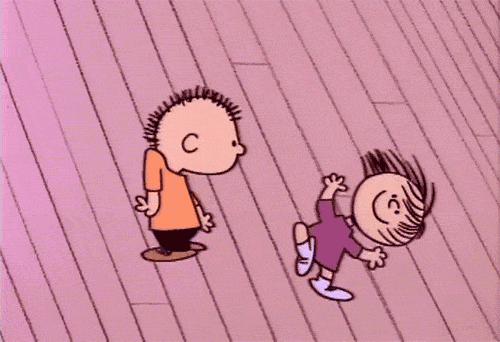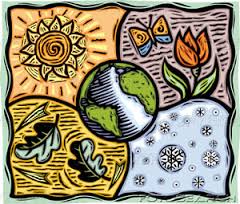From excellent article "Space & Time"
Hey guys-- The year's winding down--can you believe it? After April vacation, we've got six short weeks left! Where has the time gone? In fact. . .
What is time anyway?
According to "Space & Time," one in a series of really interesting articles located HERE, time can refer to how fast something is moving (its speed), or how long it lasts (its duration).
Speed:
 Did you know that light travels at a speed of 186,282 miles each second -- or roughly 6 trillion (with a "t") miles in a year? Its speed never changes, either. Things, whatever they may be, travel at different speeds depending on their size, their mass, and the forces acting on them. (Super powers also might have something to do with it.)
Did you know that light travels at a speed of 186,282 miles each second -- or roughly 6 trillion (with a "t") miles in a year? Its speed never changes, either. Things, whatever they may be, travel at different speeds depending on their size, their mass, and the forces acting on them. (Super powers also might have something to do with it.)Check this out!
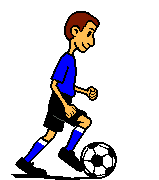 Duration:
Duration:Time also refers to how long things last. A breath, a heartbeat, (a cookie,) a Math test, a soccer game, a season... A lifetime can last more than 100 years, and a galaxy can be billions of years old. Hmmm. . . That brings me to an interesting observation. Do you ever feel like time seems to drag on and on and on? Like when you're sick, or while you're waiting for Christmas?
(You never feel like that when you're in class, right?)
Sometimes other things seem to drag on and on, too!
When you're doing something that you really enjoy, though, time seems to fly by, right? Why is that?
ISN'T IT INTERESTING?. . .
You guys can't wait to grow up, and your grandparents are wondering where the time has gone. It's all just a matter of perspective. Time has only one direction--forward. That's it. There's no turning back to change, redo, or undo something that's already happened. No sireee. (You've heard the expression, "What's done is done. . ." ) Bummer.
Unfortunately you're not like these guys. . .
 |
| Mr. Peabody & Sherman with their wonderful WayBack Machine |
That is, unless you're Superman.
Want to see something cool?
Pretend you're Superman flying at your usual warp speed and you decide to amp it up even more to blast back in time. Position your outstretched fist (Superman-style) at the center of this image. . .
Blam! You appear to speed up!
(Hey, come back here! The year's not over yet!)
ASSIGNMENTS FOR
THE WEEK OF
APRIL 11th-15th
If you don't have time to do it right,
GENERAL DIRECTIONS
A misconception is an incorrect idea about something. Read about common misconceptions of why we have seasons:
Write the following questions and answer them in complete sentences. You can use information from below or from our blog to help you.
The Moon
 Why do dogs howl at the moon?
Why do dogs howl at the moon?
For centuries, people have blamed odd behavior (dogs howling, cats yowling, people being, you know, weirder) on the full moon. You have to admit, it's the kind of sound of which legends are made. So, why do dogs howl at the moon?
Could it be that dogs are channeling their inner wolf?
 Dogs originate from wolves, so yea. . . but that's not it. You see, wolves don't bark at the moon, either. They might howl to keep track of their pack's movements or to alert other packs nearby of their presence. That's it.
Dogs originate from wolves, so yea. . . but that's not it. You see, wolves don't bark at the moon, either. They might howl to keep track of their pack's movements or to alert other packs nearby of their presence. That's it.
Reasons Dogs "Howl at the Full Moon"
There's greater visibility during a full moon, which makes it easier to see. Brighter light may be disturbing and/or confusing to dogs.
Dogs have a keen sense of hearing and sounds carry better in night-time's cleaner atmosphere. Nocturnal critters are, in all likelihood, getting their attention.
Dogs are territorial creatures and may be reminding other dogs to stay away.
Dogs are also social animals. Could be they're just communicating with other canines?" Hel-ah-ooooooo!
Whatever the reason, dogs do lift their heads when they howl, but not to howl at the moon. It simply helps them to project their voices better. We do that, too. Try it! Ah-ooooooooo!

Wednesday: "The Moon" -- "The Moon" PPT & Notetaking activity
Language Arts
Tuesday--Friday TBA
Hey guys--Play a fun punctuation game HERE
THE WEEK OF
APRIL 11th-15th
"Reasons for the Seasons"
mini book.
NEATNESS MATTERS!
If you don't have time to do it right,
when are you ever going to find the time to do it over?
GENERAL DIRECTIONS
- Take two pieces of white art paper and fold them together the hamburger way.
- Staple them together on the fold. (There's a good stapler in the copy room.)
- IMPORTANT: Position your booklet with the fold at the top and the 4 loose ends on the bottom. Your booklet will open by lifting up a page.
- Write the words REASONS FOR THE SEASONS neatly in the center of the paper. This will be the cover of your project. Use borders, color, illustrations as you wish to make the cover attractive.
- Open your booklet.
- Write the words Misconceptions About the Seasons on the top of the page that is above the staples. Neatly write (or type and attach with glue stick) the required information.
- Write the words Tilt of the Earth on the page that is below the staples and Part 1. Illustrate. Be neat; use color. Label completely and neatly.
- Flip up to the next two blank pages. On the top of the page above the staples write How the Angle of Sunlight Affects the Earth, then write (or type) your completed questions & answers.
- On the page below the staple write Reasons for the Seasons. Write or paste your completed paragraph here. Remember to edit and revise!
- On the back, write your name and the date.
SPECIFIC DIRECTIONS FOR EACH PAGE
Part 1:
Flip up first page of booklet. The space above the staple is page 1. Title this page: Misconceptions About the Seasons
Flip up first page of booklet. The space above the staple is page 1. Title this page: Misconceptions About the Seasons
A misconception is an incorrect idea about something. Read about common misconceptions of why we have seasons:
Make a list of some common misconceptions about the reasons for the seasons. (at least four). They should be written (or typed--to be attached to page 1 with glue stick only) in complete, well-constructed sentences.
Part 2:
This goes below the staple (and Part 1). Title this page: Tilt of the Earth
This goes below the staple (and Part 1). Title this page: Tilt of the Earth
Draw a picture of the Earth, showing its tilt at each season: Winter, Spring, Summer, Autumn. Label the seasons and dates (You can use the websites from Part 4 below or others on our blog.)
Part 3:
Flip up second page of booklet. The space above the staple is page 3. Title this page: How the Angle of Sunlight Affects the Earth
Flip up second page of booklet. The space above the staple is page 3. Title this page: How the Angle of Sunlight Affects the Earth
Write the following questions and answer them in complete sentences. You can use information from below or from our blog to help you.
- How does the angle of the sunlight that hits the Earth affect the seasons?
- How does the angle of the sunlight that hits the Earth affect day and night?
Part 4:
This goes below the staple (and Part 3.) Title it Reasons for the Seasons.
This goes below the staple (and Part 3.) Title it Reasons for the Seasons.
Check out the websites below:
Write a well-constructed paragraph explaining the reasons for the seasons, making sure to incorporate information from at least two websites into your paragraph. (Indicate which two websites you used at the end of the paragraph.)
"Seasons" games can be found HERE!
The Moon
 Why do dogs howl at the moon?
Why do dogs howl at the moon?For centuries, people have blamed odd behavior (dogs howling, cats yowling, people being, you know, weirder) on the full moon. You have to admit, it's the kind of sound of which legends are made. So, why do dogs howl at the moon?
Could it be that dogs are channeling their inner wolf?
 Dogs originate from wolves, so yea. . . but that's not it. You see, wolves don't bark at the moon, either. They might howl to keep track of their pack's movements or to alert other packs nearby of their presence. That's it.
Dogs originate from wolves, so yea. . . but that's not it. You see, wolves don't bark at the moon, either. They might howl to keep track of their pack's movements or to alert other packs nearby of their presence. That's it.Reasons Dogs "Howl at the Full Moon"
There's greater visibility during a full moon, which makes it easier to see. Brighter light may be disturbing and/or confusing to dogs.
Dogs have a keen sense of hearing and sounds carry better in night-time's cleaner atmosphere. Nocturnal critters are, in all likelihood, getting their attention.
Dogs are territorial creatures and may be reminding other dogs to stay away.
Dogs are also social animals. Could be they're just communicating with other canines?" Hel-ah-ooooooo!
Whatever the reason, dogs do lift their heads when they howl, but not to howl at the moon. It simply helps them to project their voices better. We do that, too. Try it! Ah-ooooooooo!

Wednesday: "The Moon" -- "The Moon" PPT & Notetaking activity
Thursday: "The Moon" Activity
Friday:
Moon phase calculator HERE
Another cool moon phase calculator HERE
Moon phases calendar HERE
Moonlight Madness HERE
Phases of the Moon Interactive HERE
Moon Song--let's boogie!
Language Arts
Monday: We're in the middle of several activities which we'll complete upon my return, so for today, watch this Bill Nye Video about the seasons. Complete Comprehension/Analysis questions. Due Wednesday. Be sure your Constellation myths have been edited and shared with me.
Tuesday--Friday TBA
Hey guys--Play a fun punctuation game HERE
SOCIAL STUDIES
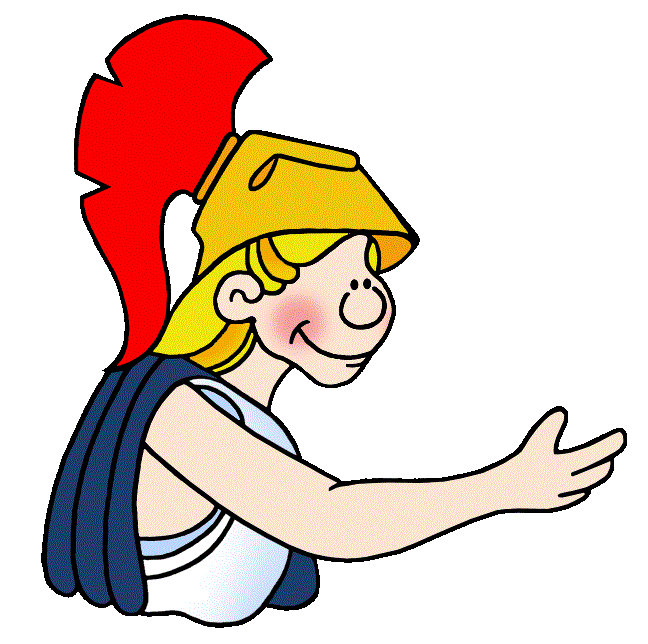
#1. COMPARE GREAT MYTHS:
What was the myth that explained the beginnings of these great cities? Find out and create a 1/2 page illustrated summary of each for your project.
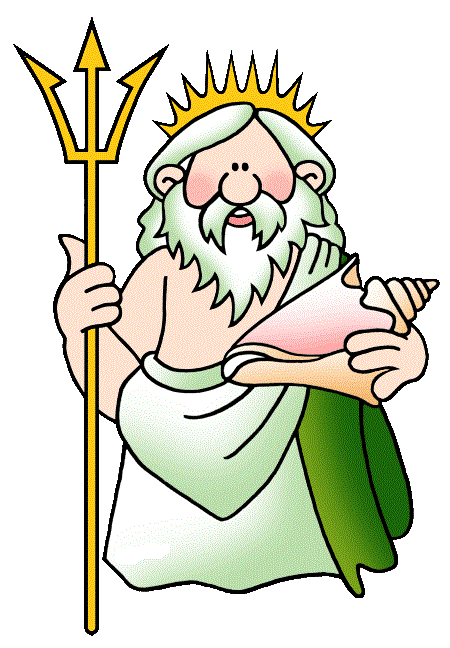
#2. CREATE CHARTS THAT LIST:
You can also look here:
Then again, you could watch a video:
Your Greek Ampnorae came out beautifully, and now it's time to look at an artform for which ancient Rome is well-known. Mosaics. I have a handout for you with all the directions you'll need. Look at the interactive sites below. Play around with ideas using our smallest grid graph paper. For the activity, you'll need to cut colored construction paper into small squares (I will give you 1/2" strips and a paper cup for each color.)
WE'LL BE USING THE FOLLOWING WEBSITES AS WE CONTINUE OUR COMPARATIVE STUDY OF GREECE AND ROME. MORE WILL BE ADDED AS NECESSARY. BECOME FAMILIAR WITH THEM; THEY HOLD A WEALTH OF REALLY INTERESTING INFORMATION.
ANCIENT GREECE WEBSITES
- Ancient Greece for Kids - Mr. Donn
- Who’s Who of Greek Gods
- Ancient Greece -- A Little of Everything! Way cool!
- Ancient Greece -- Even More of What You Want to Learn About
- Ancient Greece for Kids: Another general kid-friendly resource
- Ancient Greece: Gods and Heroes
- The Ancient Olympics
- The British Museum: Ancient Greece -- so wonderful!
- Lots of Fun: Mythweb! More about gods and heroes
- Huge site!
Activities & Fun Stuff Websites
- Fun Ancient Greece Interactive website
- Odyssey Online Greece: An Interactive Learning Experience. WAY COOL!!!
- Adventures in Ancient Greece Interactive! A Must See!! (Take the Quiz)
- A Fun Place to Explore
ANCIENT ROME WEBSITES
Activities & Fun Stuff Websites
- Online mosaic maker
- Design a mosaic (shows examples)
- Graph paper for mosaic practice can be found HERE
- Roman number converter
- Standards-based content meets really fun games with Dig-It apps in iTunes: Roman Town, Artifact Snatch, and Lost Pursuit: Pompeii among others. Check them out HERE!
Math
Chapter 8
Evaluate Algebraic Expressions
Monday: 8.1 Solutions of Equations.Share & Show, pgs. 425-426. Practice & Homework, pgs. 427-428 Essential Question: How do you determine if a number is a solution to an equation?
Tuesday: 8.2 Write Equations. Share & Show and Practice & Homework Essential question: How do you write an equation to represent a situation.
Wednesday: 8.3 Model and Solve Addition Equations. Share & Show and Practice & Homework Essential Question: How can you use models to solve addition equations?
Thursday: 8.4 Solve Addition and Subtraction Equations. Share & Show and Practice & Homework Essential Question: How do you solve addition and subtraction equations?
Friday: 8.5 Model and Solve Multiplication Equations. Share & Show and Practice & Homework. Essential Question: How can you use models to solve multiplication equations?
8.1 continued: I like the way this teacher sets up equations to solve.
8.2 Write Equations
8.4 SOLVING ADDITION
AND SUBTRACTION EQUATIONS
Math duuude!
SPELLING
Lesson 11
Test on Friday
(Minibook project modified from Reasons for the Seasons Webquest)
Flash vintage animated gif Math illustration Mr. Peabody image Linus dancing animated gif Superman image response to literature image





